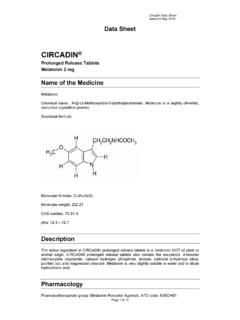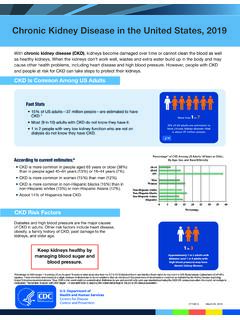Transcription of Small, Low Power, 3-Axis ±200 g Accelerometer Data Sheet ...
1 Small, Low Power, 3-Axis 200 g Accelerometer data Sheet ADXL377. FEATURES GENERAL DESCRIPTION. 3-Axis sensing The ADXL377 is a small, thin, low power, complete 3-Axis Small, low profile package Accelerometer with signal conditioned voltage outputs. The 3 mm 3 mm mm LFCSP ADXL377 measures acceleration resulting from motion, shock, Low power: 300 A (typical) or vibration with a typical full-scale range of 200 g. Single-supply operation: V to V. The user selects the bandwidth of the Accelerometer using 10,000 g shock survival the CX, CY, and CZ capacitors at the XOUT, YOUT, and ZOUT pins. Excellent temperature stability Bandwidths can be selected to suit the application, with a range Bandwidth adjustment with a single capacitor per axis of Hz to 1300 Hz for the x-axis and y-axis and a range of RoHS/WEEE and lead-free compliant Hz to 1000 Hz for the z-axis. APPLICATIONS The ADXL377 is available in a small, low profile, 3 mm 3 mm . Concussion and head trauma detection mm, 16-lead lead frame chip scale package (LFCSP_LQ).
2 High force event detection FUNCTIONAL BLOCK DIAGRAM. +3V. VS. ADXL377. OUTPUT 32k XOUT. AC AMPLIFIERS. AMPLIFIER CX. CDC 32k YOUT. DEMODULATOR. 3-Axis CY. SENSOR. 32k ZOUT. CZ. GND ST. 10765-001. Figure 1. Rev. B Document Feedback Information furnished by Analog Devices is believed to be accurate and reliable. However, no responsibility is assumed by Analog Devices for its use, nor for any infringements of patents or other rights of third parties that may result from its use. Specifications subject to change without notice. No One Technology Way, Box 9106, Norwood, MA 02062-9106, license is granted by implication or otherwise under any patent or patent rights of Analog Devices. Tel: 2012 2019 Analog Devices, Inc. All rights reserved. Trademarks and registered trademarks are the property of their respective owners. Technical Support ADXL377 data Sheet TABLE OF CONTENTS. Features .. 1 Performance ..8. Applications .. 1 Applications Information.
3 9. General Description .. 1 Power Supply Decoupling ..9. Functional Block Diagram .. 1 Setting the Bandwidth Using CX, CY, and CZ ..9. Revision History .. 2 Self-Test ..9. 3 Selecting Filter Characteristics: Noise/Bandwidth Trade-Off ..9. Absolute Maximum Ratings .. 4 Axes of Acceleration Sensitivity .. 10. ESD Caution .. 4 Layout and Design Recommendations .. 11. Pin Configuration and Function Descriptions .. 5 Outline Dimensions .. 12. Typical Performance Characteristics .. 6 Ordering Guide .. 12. Theory of Operation .. 8. Mechanical 8. REVISION HISTORY. 4/2019 Rev. A to Rev. B 9/2012 Revision 0: Initial Version Changes to Table 2 .. 4. 9/2018 Rev. 0 to Rev. A. Changes to Operating Temperature Range Parameter, Table 2 .. 4. Updated Outline Dimensions .. 12. Changes to Ordering Guide .. 12. Rev. B | Page 2 of 12. data Sheet ADXL377. SPECIFICATIONS. TA = 25 C, VS = 3 V, CX = CY = CZ = F, acceleration = 0 g, unless otherwise noted. All minimum and maximum specifications are guaranteed.
4 Typical specifications are not guaranteed. Table 1. Parameter Test Conditions/Comments Min Typ Max Unit SENSOR INPUT Each axis Measurement Range 200 g Nonlinearity % of full scale up to 180 g %. Cross-Axis Sensitivity 1 %. SENSITIVITY, RATIOMETRIC 2 Each axis Sensitivity at XOUT, YOUT, and ZOUT VS = 3 V mV/g Sensitivity Change Due to Temperature 3 VS = 3 V %/ C. ZERO g BIAS LEVEL, RATIOMETRIC. Zero g Voltage VS = 3 V, TA = 25 C V. Zero g Offset vs. Temperature X-Axis and Y-Axis 12 mg/ C. Z-Axis 30 mg/ C. NOISE PERFORMANCE. Noise Density XOUT and YOUT mg/ Hz ZOUT mg/ Hz FREQUENCY RESPONSE 4. Bandwidth 5 No external filter XOUT and YOUT 1300 Hz ZOUT 1000 Hz RFILT Tolerance 32 15% k . Sensor Resonant Frequency kHz SELF-TEST 6. Logic Input Low V. Logic Input High V. ST Actuation Current 60 A. Output Change Self-test, 0 to 1. At XOUT mV. At YOUT mV. At ZOUT mV. OUTPUT AMPLIFIER No load Output Swing Low V. Output Swing High V. POWER SUPPLY. Operating Voltage Range 7 V.
5 Supply Current VS = 3 V 300 A. Turn-On Time 8 No external filter 1 ms OPERATING TEMPERATURE RANGE 40 +85 C. 1. Defined as coupling between any two axes. 2. Sensitivity is essentially ratiometric to VS. 3. Defined as the output change from ambient temperature to maximum temperature or from ambient temperature to minimum temperature. 4. Actual frequency response controlled by user-supplied external filter capacitors (CX, CY, and CZ). 5. Bandwidth with external capacitors = 1/(2 32 k Cx). 6. Self-test response changes cubically with VS. 7. Tested at V and guaranteed by design only (not tested) to work over the full voltage range from V to V. 8. Turn-on time is dependent on CX, CY, and CZ and is approximately 160 (CX or CY or CZ) + 1, where CX, CY, and CZ are in F and the resulting turn-on time is in ms. Rev. B | Page 3 of 12. ADXL377 data Sheet ABSOLUTE MAXIMUM RATINGS. Table 2. ESD CAUTION. Parameter Rating Acceleration (Any Axis). Unpowered 10,000 g Powered 10,000 g VS V to + V.
6 All Other Pins (GND V) to (VS + V). Output Short-Circuit Duration Indefinite (Any Pin to Ground). Operating Temperature Range 40 C to +85 C. Storage Temperature Range 65 C to +150 C. Temperature Range (Powered) 50 C to +125 C. Stresses at or above those listed under Absolute Maximum Ratings may cause permanent damage to the product. This is a stress rating only; functional operation of the product at these or any other conditions above those indicated in the operational section of this specification is not implied. Operation beyond the maximum operating conditions for extended periods may affect product reliability. Rev. B | Page 4 of 12. data Sheet ADXL377. PIN CONFIGURATION AND FUNCTION DESCRIPTIONS. ZOUT. NC. VS. VS. 16 15 14 13. RES 1 ADXL377 12 NC. TOP VIEW. ST 2. (Not to Scale). 11 NC. +Y. RES 3 +Z 10 NC. YOUT 4 +X 9 NC. 5 6 7 8. XOUT. GND. GND. NC. NOTES. 1. NC = NO CONNECT. 2. THE EXPOSED PAD IS NOT INTERNALLY. 10765-002. CONNECTED, BUT SHOULD BE SOLDERED.
7 FOR MECHANICAL INTEGRITY. Figure 2. Pin Configuration Table 3. Pin Function Descriptions Pin No. Mnemonic Description 1, 3 RES Reserved. This pin must be connected to GND or left open. 2 ST Self-Test. 4 YOUT Y Channel Output. 5 XOUT X Channel Output. 6, 7 GND Must be connected to ground. 8 to 13 NC No Connect. Not internally connected. 14, 15 VS Supply Voltage. V typical. 16 ZOUT Z Channel Output. EPAD Exposed Pad. The exposed pad is not internally connected, but should be soldered for mechanical integrity. Rev. B | Page 5 of 12. ADXL377 data Sheet TYPICAL PERFORMANCE CHARACTERISTICS. N > 250 for all typical performance figures, unless otherwise noted. N is the number of parts tested and used to produce the histograms. 35 30. PERCENT OF POPULATION (%). 25. OUTPUT VOLTAGE (V). 20 15 10. 5. 0 10765-006. 60 40 20 0 20 40 60 80 100. 10765-003. TEMPERATURE ( C). OUTPUT VOLTAGE (V). Figure 3. X-Axis Zero g Output Voltage at 25 C, VS = 3 V Figure 6.
8 X-Axis Zero g Offset vs. Temperature, VS = 3 V. (14 Parts Soldered to PCB). 30 25. PERCENT OF POPULATION (%). OUTPUT VOLTAGE (V). 20 15. 10 5. 0 10765-007. 60 40 20 0 20 40 60 80 100. 10765-004. TEMPERATURE ( C). OUTPUT VOLTAGE (V). Figure 4. Y-Axis Zero g Output Voltage at 25 C, VS = 3 V Figure 7. Y-Axis Zero g Offset vs. Temperature, VS = 3 V. (14 Parts Soldered to PCB). 90 80 PERCENT OF POPULATION (%). 70 OUTPUT VOLTAGE (V). 60 50 40 30 20 10 0 10765-008. 60 40 20 0 20 40 60 80 100. 10765-005. TEMPERATURE ( C). OUTPUT VOLTAGE (V). Figure 5. Z-Axis One g Output Voltage at 25 C, VS = 3 V Figure 8. Z-Axis Zero g Offset vs. Temperature, VS = 3 V. (14 Parts Soldered to PCB). Rev. B | Page 6 of 12. data Sheet ADXL377. 25 250. 20 200. PERCENT OF POPULATION (%). 15 150. OUTPUT (g). 10 100. 5 50. X-AXIS. Y-AXIS. Z-AXIS. 0 0. 10765-012. 0 50 100 150 200. 10765-009. REFERENCE ACCELERATION (g). SENSITIVITY (mV/g). Figure 9. X-Axis Sensitivity at 25 C, VS = 3 V Figure 12.
9 Typical Output Linearity over the Dynamic Range 30 10. 25. PERCENT OF POPULATION (%). SENSITIVITY (mV/g). 20. 15. 10. 5. X-AXIS, Y-AXIS RESPONSE. Z-AXIS RESPONSE. 0 1. 10765-013. 10 100 1k 10k 10765-010. FREQUENCY (Hz). SENSITIVITY (mV/g). Figure 10. Y-Axis Sensitivity at 25 C, VS = 3 V Figure 13. Typical Frequency Response 16. 14. PERCENT OF POPULATION (%). 12. 10. 8. 6. 4. 2. 0. 10765-011. SENSITIVITY (mV/g). Figure 11. Z-Axis Sensitivity at 25 C, VS = 3 V. Rev. B | Page 7 of 12. ADXL377 data Sheet THEORY OF OPERATION. The ADXL377 is a complete 3-Axis acceleration measurement The demodulator output is amplified and brought off chip through system with a typical measurement range of 200 g. The ADXL377 a 32 k resistor. The user then sets the signal bandwidth of the contains a polysilicon, surface-micromachined sensor and signal device by adding a capacitor. This filtering improves measurement conditioning circuitry to implement an open-loop acceleration resolution and helps prevent aliasing.
10 Measurement architecture. The output signals are analog voltages MECHANICAL SENSOR. that are proportional to acceleration. The Accelerometer can mea- sure the static acceleration of gravity in tilt-sensing applications, The ADXL377 uses a single structure for sensing the accelera- as well as dynamic acceleration resulting from motion, shock, tion in the x-axis, y-axis, and z-axis. As a result, the three sense or vibration. directions are highly orthogonal with little cross-axis sensitivity. Mechanical misalignment of the sensor die to the package or The sensor is a polysilicon, surface-micromachined structure misalignment of the package to the PCB is the chief source of built on top of a silicon wafer. Polysilicon springs suspend the cross-axis sensitivity. Mechanical misalignment can be calibrated structure over the surface of the wafer and provide resistance at the system level. against acceleration forces. Deflection of the structure is meas- ured using a differential capacitor that consists of independent PERFORMANCE.












